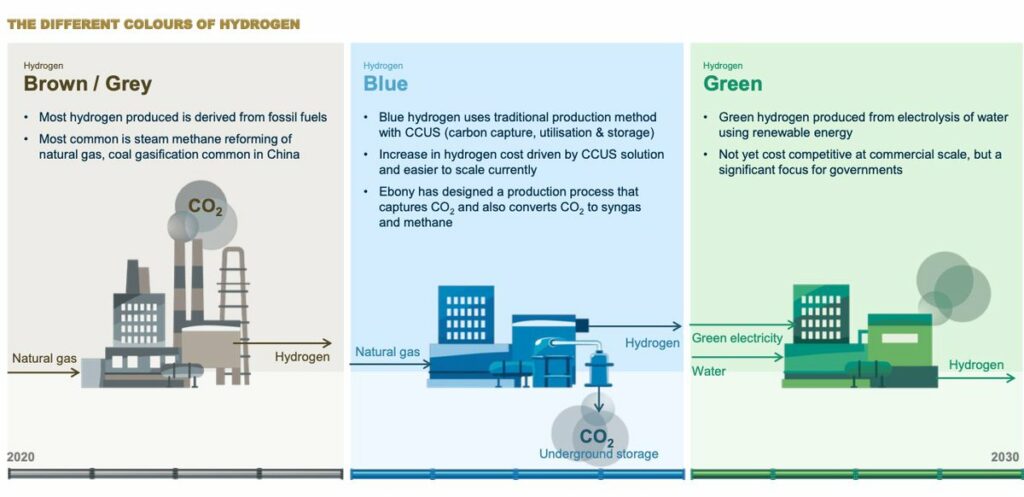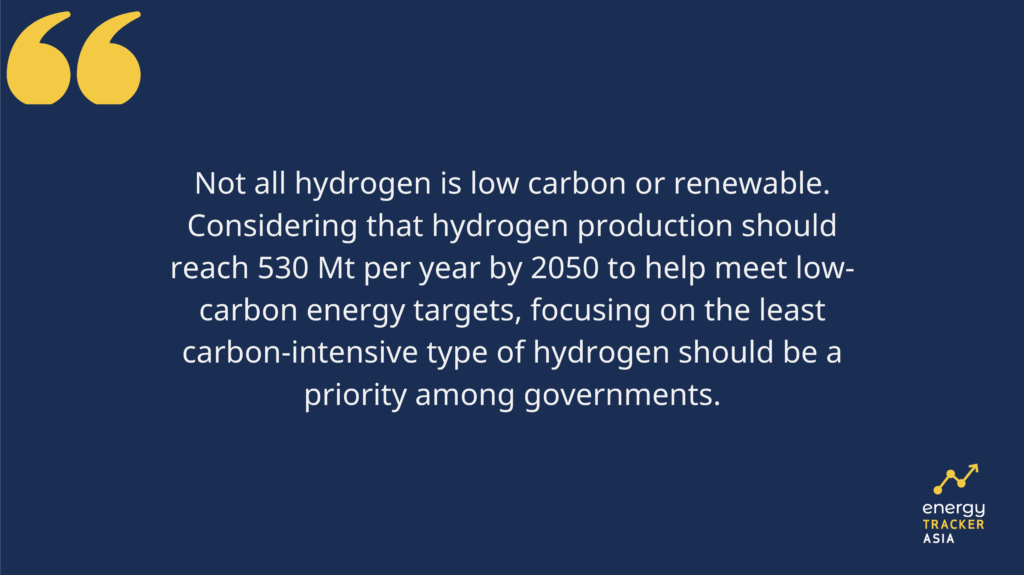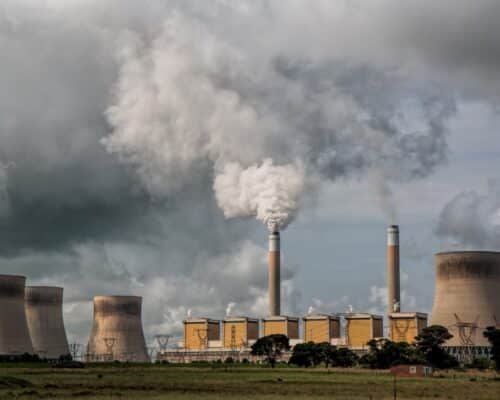Types of Hydrogen: Grey, Blue and Green
Photo by Literator
11 June 2024 – by Eric Koons Comments (0)
Fuel and production methods determine the different types of hydrogen. One major reason for separating hydrogen into categories is to limit the opportunity for greenwashing. This is necessary because not all hydrogen is low-carbon dioxide or renewable. Most of the hydrogen produced today is polluting and relies on fossil fuels.
Even though hydrogen is a clean energy source, the process of producing it today is dirty and harmful to the environment.
Considering that hydrogen production should reach 530 Mt per year by 2050 to help meet low-carbon energy targets, focusing on the least carbon-intensive type of hydrogen should be a priority among governments.
3 Main Types of Hydrogen Fuel: Grey, Blue and Green
Three main types of hydrogen are grey hydrogen, blue hydrogen and green hydrogen.
Growing global support, the versatility of use and high energy density make hydrogen a potentially disruptive technology to the fossil fuel industry. To facilitate hydrogen energy filling this role, it is necessary to introduce a taxonomy that differentiates the carbon footprint of hydrogen in use. Regarding this issue, colour-coding hydrogen has become the norm, with the National Grid Group naming as many as nine types of hydrogen, including brown hydrogen and pink hydrogen. However, the three most common are:

1. Grey Hydrogen
Grey hydrogen is the most common type of hydrogen. It is mainly made through the process of steam methane reforming (SMR) with natural gas or other fossil fuels as the energy input. Inherently, its reliance on fossil fuels makes it carbon dioxide and greenhouse gases-heavy. In fact, over 830 million tonnes of CO2 is generated annually as a direct result of hydrogen production.
2. Blue Hydrogen
Blue hydrogen is the result of efforts to decarbonise grey hydrogen production. CCS (carbon capture and storage) technology and CCU (carbon capture and utilisation) combine with the production process to reduce total carbon dioxide emissions. However, the carbon capture rate of blue carbon projects varies greatly, with some achieving less than 50% and others reaching a 90% reduction.
3. Green Hydrogen
Green Hydrogen is the only form of low-carbon hydrogen production. It relies on energy from renewable energy sources, like solar, wind and hydro, to produce hydrogen through electrolysis. The process is simple and emits no CO2, making green hydrogen the most desirable type.
Globally, green hydrogen production makes up less than 1% of total hydrogen produced. Today, the main roadblock holding green hydrogen back is price. As of 2021, green hydrogen costs three to five times more than grey hydrogen and is double the cost of blue hydrogen. However, Bloomberg estimates that if current trends continue, the cost of green hydrogen will drop to between USD 0.70 and 1.60 per kilogram by 2050. This price will likely make it more attractive to energy utilities and cost-competitive with grey hydrogen, spurring production.

4 Basic Methods of Hydrogen Production Processes
To facilitate green hydrogen’s growth to help the world reach net-zero by 2050, experts predict the industry requires an investment between USD 5 trillion and USD 15 trillion. Subsequently, this will improve R&D, develop facilities and increase global hydrogen infrastructure.
Current production technologies show promising results, but we need more research to increase efficiency and to see a subsequent drop in hydrogen prices. The most promising processes today include:
- thermochemical processes,
- electrolytic processes,
- direct solar water-splitting processes and
- biological processes
1. Thermochemical Processes
The thermochemical process of hydrogen production splits hydrogen atoms from the energy resource itself. For example, this process can use natural gas as a fuel. In this process, hydrogen-including molecules, such as methane, are drawn from the feedstock and are split into pure hydrogen molecules. The resulting hydrogen is then used to power hydrogen fuel cells, which generate electricity to power the vehicle. The technology is reliable, but high CO2 emissions make it a poor choice on the path to net-zero emissions.

2. Electrolytic Processes
In electrolytic processes, an electric current runs through electrolysers that split water molecules to produce pure hydrogen. In this process, water is split into oxygen and hydrogen, which are separated at the cathode and anode. Although relatively inexpensive, the process requires a cautionary approach because the source of electricity determines the CO2 emissions.
There are three main electrolyser types for hydrogen formation: alkaline electrolysers, polymer electrolyte membrane electrolysers and solid oxide electrolysers. Currently, alkaline hydrolysers make up most of the current green hydrogen market and have been commercially available for years.
3. Direct Solar Water Splitting Processes
Direct solar water splitting uses light energy to split water molecules into oxygen and hydrogen. The technology is still in research, but it offers a promising future for sustainable hydrogen production. It includes photoelectrochemical and photobiological processes.
4. Biological Processes
Biological processes harness the biological reactions of microbes that produce hydrogen as a byproduct. In this model, microorganisms are fed livestock, such as biomass, that they react with to produce energy and release hydrogen.
Similarly to bio-oil-forming algae, this type of system’s efficiency and output can be increased by the selection of microorganism strains and by gene modification to achieve the desired metabolic processes.
We Need Further Investment In Green Hydrogen
Hydrogen has a high potential to help us reach a net-zero economy by 2050. However, sustainable production is not yet the most common type of hydrogen because it is not cost-competitive with other fossil fuels and renewable energy sources. Therefore, it requires an increasing focus from global leaders to innovate within the hydrogen industry to help it become a part of the future global energy mix.

by Eric Koons
Eric is a passionate environmental advocate that believes renewable energy is a key piece in meeting the world’s growing energy demands. He received an environmental science degree from the University of California and has worked to promote environmentally and socially sustainable practices since. Eric’s expertise extends across the environmental field, yet he maintains a strong focus on renewable energy. His work has been featured by leading environmental organizations, such as World Resources Institute and Hitachi ABB Power Grids.
Read more







